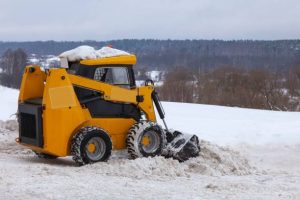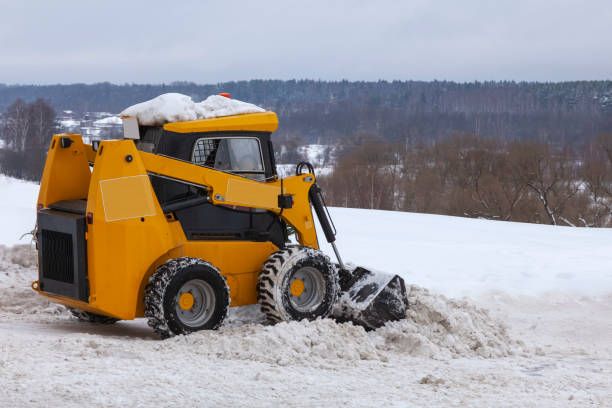Can Forklifts Be Used in the Snow?

Image courtesy of iStock by Getty Images – Photo by Igor Zubkov
This winter’s harsh weather has wreaked havoc on highways, shut down thousands of schools, and resulted in the cancellation of thousands of flights. But has it also affected the safe and efficient operation of your forklift fleet?
Given their sturdy structure and heavy-duty drive system, forklifts can be operated even at extremely low temperatures. Some vehicles are used practically 24 hours per day in deep-freeze warehouses without any trouble whatsoever.
Yet problems can occur when you add wintry weather conditions such as heavy snow and ice to the equation.
Slipping and Sliding Dangers
Like automobiles, trucks, and other materials handling vehicles, forklifts are susceptible to slipping and sliding on ice and snow. Given their heavy weight, they also can easily slide down inclines or into embankments if not operated with extreme caution during heavy weather.
Buildups of ice and snow can cause damage to a forklift’s drive train and wheels. And driving a forklift through deep pools of water can short out the battery and create big-time problems for the engine.
To prevent weather damage to your forklift fleet, make sure you don’t use forklifts designed for indoor work outdoors, especially when there is a lot of snow and ice on the ground. Keep indoor work areas — such as docks and warehouse floors — clean and clear of debris such as snow and ice.
Indoor vs Outdoor Forklifts
Forklifts that are designed to work outdoors — which usually are diesel or gas-powered — are generally more durable than indoor forklifts, which often have battery or propane power. They tend to have bigger tires that can provide more traction in wintry or rainy conditions. They also may have covered or partially covered cabs to protect their operators from the elements.
Cold temperatures and moisture can affect a forklift’s batteries, hydraulics, electrical systems and engines. It’s always a good idea to winterize your forklift fleet before the worst winter weather hits. Check oil levels and lubricants, make sure batteries are holding a charge properly, and double-check all of the vehicles’ primary operating systems such as the mast, tines, and wheels to make sure they are operating efficiently.
Making repairs or doing preventive maintenance to your forklifts is easier when you aren’t also having to deal with extreme weather conditions.
Sock In a Reserve Fuel Supply
It’s also a good idea to set in a reserve fuel supply whenever heavy winter weather is predicted. If heavy snowfall, dangerously cold temperatures, or blizzard-like conditions shut down the supply chain, you may not have access to the fuel you need to keep your operations going efficiently and profitably unless you have reserves to call upon.
If you are using forklift attachments such as snow plows, scoops, salt spreaders, sanders, and other equipment, test it out first to make sure it is working properly. Once the snow is on the ground, it’s too late to make minor repairs and adjustments.
Finally, train your forklift operators on the unique dangers associated with driving a forklift in wintry weather. It’s especially important for them to understand the tipping dangers that icy and snowy conditions can cause.

